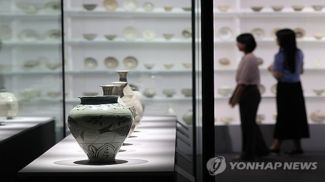BEIJING, 2 August (BelTA - China Daily). - An artisan and her daughter keep the old tradition of fiber sculpture alive, report Yang Feiyue in Beijing and Hu Meidong in Fuzhou.
A big artwork demands attention when entering Guo Meiyu's workshop. The scroll features hundreds of orioles, magpies and swallows frolicking around a polychromatic phoenix among myriad lush leaves and blooming blossoms.
After coming to terms with the scale of the picture, viewers can absorb the jaw-dropping detail at close quarters. All major elements, including bird plumes and leaf veins, are either made of cotton, or look like it. The work is a feat of fiber sculpture, an art form that dates to the Qing Dynasty (1644-1911).
As time passed, it evolved, and the "cotton picture" technique in China integrated arts and crafts, such as relief and traditional Chinese painting, and delivered innovative, three-dimensional images reflecting strong folk customs.
Born in Zhangzhou, Fujian province, Guo, who is in her early 70s, applies tweezers, scissors, copper wires and glue to twist, tear, whip and paste tufts of white cotton to create such stunning works.
"It was almost done, but on the suggestion of my friends, I decided to put in more leaves'," Guo says about a new piece she's working on. "Or, even one or two wild rabbits might make the whole thing look more alive."
Guo has been dealing with cotton for more than half a century. Having created countless birds, flowers and pavilions out of the fiber, Guo has developed a finicky taste over the years. "It's not enough to just like the cotton picture, if you want to learn to make it, you have to put your heart into it."
Her artistic expression first appeared in the 1960s in Zhangzhou, producing flowers and characters on quilts with cotton to meet customer demand.
As the quilts couldn't be mass-produced in those days, due to the lack of industrial resources, some of the workers who fluffed cotton to make filling for the quilts, like Huang Jiasheng, began to think of ways to make other items from cotton. They made a bold attempt to separate the two-dimensional pictures on quilts, and applied craft techniques such as binding, molding and pasting to present such exquisite images in glass frames, against a background of non-woven fabric featuring landscape paintings to create the unique arrangements.
"There was a cotton-wadded quilt shop near the entrance of my primary school in 1964," Guo says. "I often dropped in to see how they made things there."
This early exposure to the charm of fiber sculpture led her to sign up for an apprenticeship at the local cotton plant, which was established by Huang. After her middle school graduation in 1971, when she was 19, Guo and other four girls learned to make cotton pictures with Huang.
"We watched him making the cotton pictures, often during lunch hours" she recalls. "None of us dared say anything, we only observed and learned."
Guo has witnessed the prosperity of the trade. In the 1970s and '80s, the demand for fiber sculptures exceeded supply and they were sold to more than 40 countries. China's Ministry of Foreign Affairs used them as gifts for diplomatic occasions. Residents in Zhangzhou were proud of hanging a cotton picture when getting married or moving into a new house.
However, after a while, a growing number of factories started to produce them, which resulted in oversupply and low-quality products flooding the market. In the early 1990s, many factories producing cotton pictures closed.
To make a living, Guo went back home and helped her father maintain the family's photography studio, where she used cotton to make some of the props and backgrounds for photos. She also made cotton pictures from time to time at the studio.
In 2004, local authorities in Zhangzhou approached Guo and asked if she was willing to help revive the craft. "I was torn because I would have to close the studio if I said yes," she says.
She was eventually persuaded to take up the work after she realized the significance of the revival effort. She was especially moved when people from a program on China Central Television reached out to her and told her how many families abroad were interested in the craft.
"It was a big encouragement," Guo says.
She turned part of her apartment into a workshop and has concentrated on fiber sculpture ever since. Guo inherited traditions while attempting to innovate. She interlaced knitting wools with cotton to improve the luster, and borrowed from Chinese painting, sculpture and modern lighting to make her pieces more artistic. One of her most unforgettable pieces resembles a long painting that runs more than 6 meters and is 2.7 meters in height. It took her several months to complete.
"It was one of the biggest I had done, and my apprentices and former colleagues even arranged a lift for me to reach the higher parts," Guo says.
Her works began to foster an appreciation for the craft, and various museums started to collect them. It also helped bring more attention to the craft, which was on the verge of disappearing. In 2010, cotton picture production was named as an intangible cultural heritage in Zhangzhou.
"Cotton pictures are pure handicraft, and every piece is one of a kind," Guo says. "It takes years just to acquire all the basic skills, and creating a cotton picture is also time-consuming. It can't be done without patience and willpower."
Under Guo's influence, her daughter Lyu Jiahui has taken to the craft. Lyu began to learn from Guo during her spring and summer vacations in college, and her participation has brought fresh ideas. In addition to studying traditional patterns, characterized by birds and flowers, Lyu has developed designs that appeal to the younger generation. "I'd like my works to be a bit more cute and lighthearted," she says.
Lyu has created a series of works that feature the animals of the Chinese zodiac and the mascots for the 2022 Winter Olympics held in Beijing and Hebei province.
Lyu takes pride in the understanding that her works have not been sidelined by her mother's sense of tradition, but instead have gradually been accepted by Guo. "I'm trying to make her accept my new ideas, some of which she quite likes," Lyu says.
Guo and Lyu now often go to schools and communities to promote fiber sculpture. To date, Guo has trained more than 20 artisans. She says her greatest joy now comes from her 4-year-old granddaughter. "She sometimes stands close to me and watches very carefully when I am working on a cotton arrangement," Guo says. "I hope it plants the seed of interest in her."













